British wildflowers have been an integral and important part of the nation’s ecosystem for hundreds if not thousands of years. They appear in literature, art, anthropology and in the realms of fantasy and mythology. As well as being wonderful to look at, photograph and learn about, they are vital for the survival of the environment.
Wildflower meadows contain dozens of different types of flowers and they attract bees, butterflies and other pollinating insects. They’re also a source of food for spiders, small reptiles and amphibians as well as birds and bats. Each one has a unique way to attract pollinators and to distribute its seeds.
UK wildflowers hold rainwater which helps to prevent flooding, they store large amounts of carbon, they filter the air and prevent soil erosion. However sadly, according to the National Trust, over ninety-seven percent of British wildflower meadows have been lost since the 1930s. That’s the equivalent of 7.5 million acres, or something like five million football pitches.
British Wildflowers
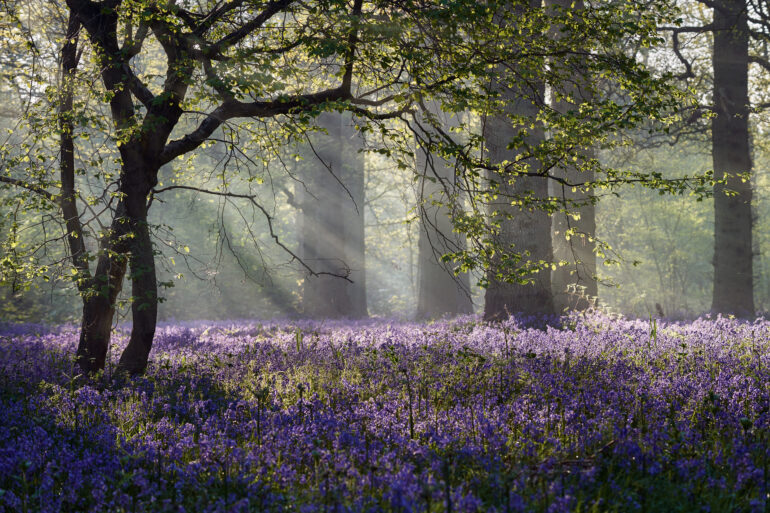
Rays of sunlight enter this Bluebell forest (Photo: stevendocwra via Getty Images)
The wildflowers of Britain are scattered all across the nation. They’re found in gardens, in woodlands and even grass verges. They can be seen in forests, parks, heaths and moors. They’re at the seaside, in ancient hedgerows, up mountains and in wetlands. In fact there aren’t that many places in Britain where you won’t find wildflowers of one sort or another! Here is a list of the most common wildflowers in the UK.
Dog Rose | Rosa canina

Rosa canina (Photo: Jacky Parker Photography via Getty Images)
With large white or pale pink petals, the Dog Rose can be found in hedgerows and woodland edges. It was once thought the root could be used to cure a wild dog bite.
Cow Parsley | Anthriscus sylvestris
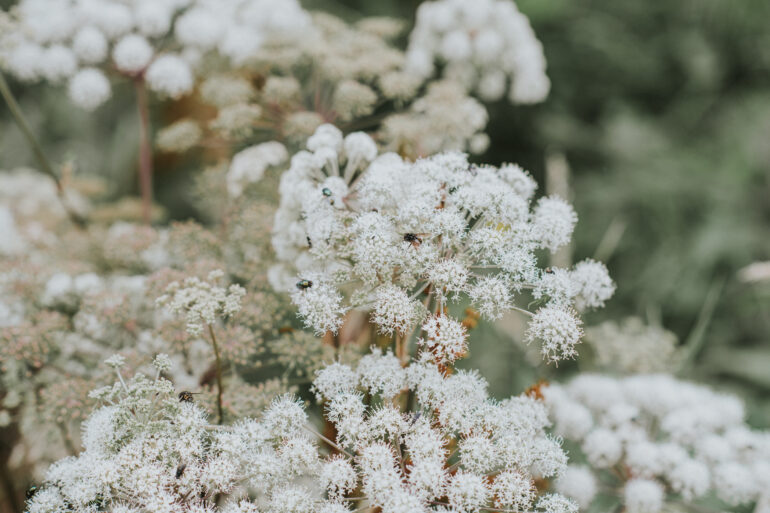
Cow Parsley (Photo: Catherine Falls Commercial via Getty Images)
Also known as Queen Anne’s Lace, it is one of the most common blooms on this list of wildflowers in the UK. It can be found in all types of environments.
Lesser Celandine | Ficaria verna
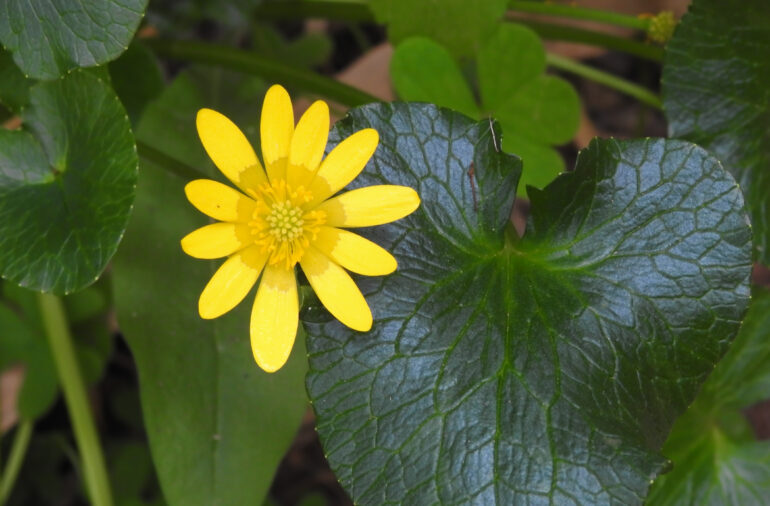
Lesser Celandine (Valter Jacinto via Getty Images)
A member of the buttercup family, the yellow star-shaped flower grows on stream banks and damp woodland paths. They provide a vital source of nectar for bees.
Red Campion | Silene dioica
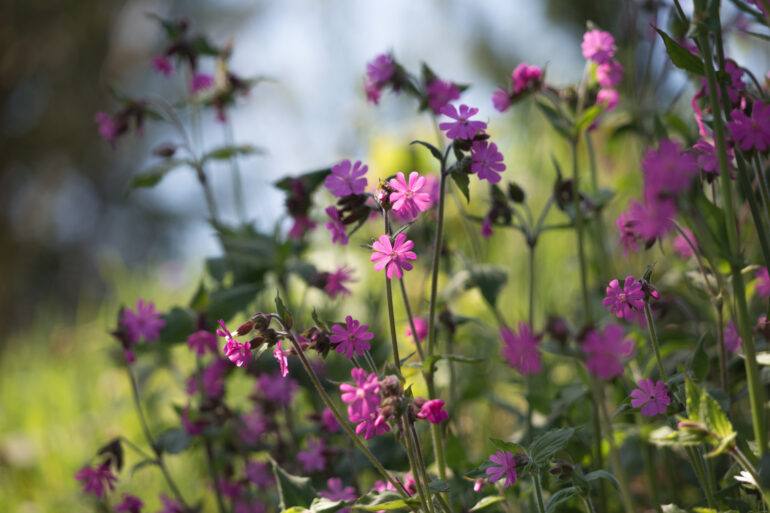
Red campion (Photo: AL Hedderly via Getty Images)
The stunning pink flowers are one of the prettiest UK wildflowers. They are found in hedgerows, fields and verges and are vital for hoverflies and butterflies.
Bluebell | Hyacinthoides non-scripta
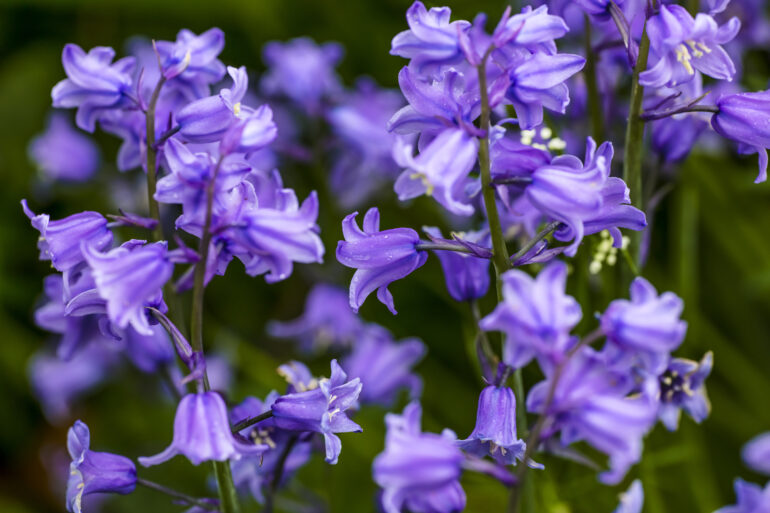
Bluebells (Photo: mikroman6 via Getty Images)
Of all the blue wild flowers UK has, the bluebell is surely the most iconic. They are found in ancient woodlands and their sticky sap was once used to bind books.
Honeysuckle | Lonicera periclymenum
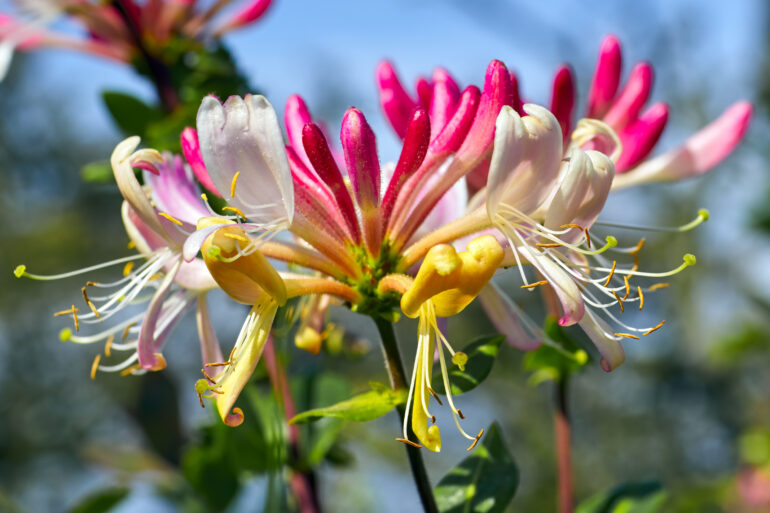
Honysuckle (Photo: shugsfishing via Getty Images)
The curved, trumpet-like flowers grow in woodlands and hedgerows. It was once believed to bring good luck if it grew around the front door of a house.
Dandelion | Taraxacum officinale
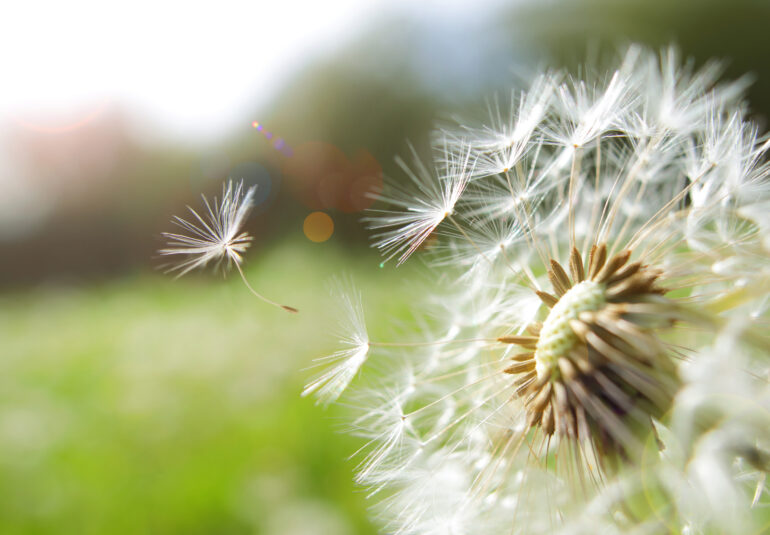
Dandelion (Photo: Peter Cade via Getty Images)
The dandelion is one of the most instantly recognised yellow wildflowers. UK has over 200 microspecies.
Enchanter’s Nightshade | Circaea lutetiana
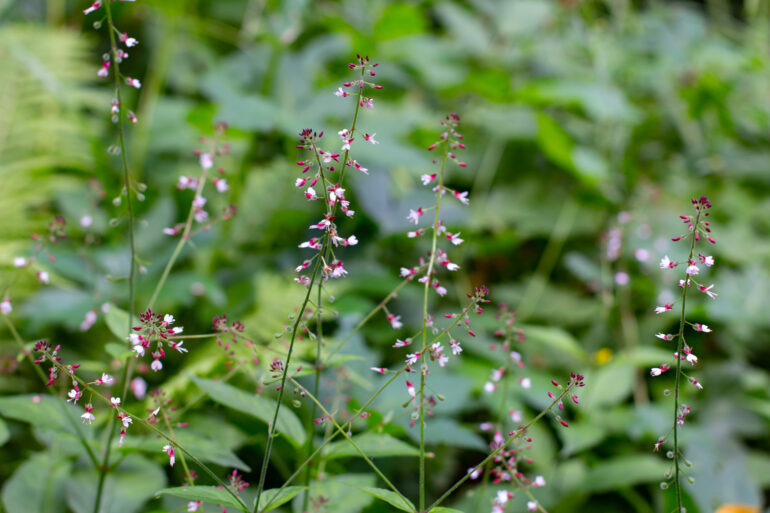
Enchanters nightshade (Photo: Robert Knapp via Getty Images)
The fruit of this wildflower cleverly attaches itself to animals for dispersal. The name Circaea is named after Circe, a Greek enchantress who used the flower as a charm.
Foxglove | Digitalis purpurea

Foxglove (Photo: Jan-Stefan Knick)
The foxglove is a beautiful flower that’s often used in landscaping and gardens. This flower is also known by its scientific name, Digitalis purpurea.
Wood Anemone | Anemone nemorosa

Wood Anemone (Credit: Ashley Cooper via Getty Images)
The star-shaped flower grows in woodlands, hedgerows and meadows. The ancient Romans believed it to be a lucky charm and used it to ward off illness.
Snowdrop | Galanthus nivalis

Snowdrops (Photo: © Jackie Bale via Getty Images)
One of the earliest spring blooms, this most common of British wildflowers is found in parks, gardens and grasslands. The bulbs are poisonous if eaten.
Cowslip | Primula veris
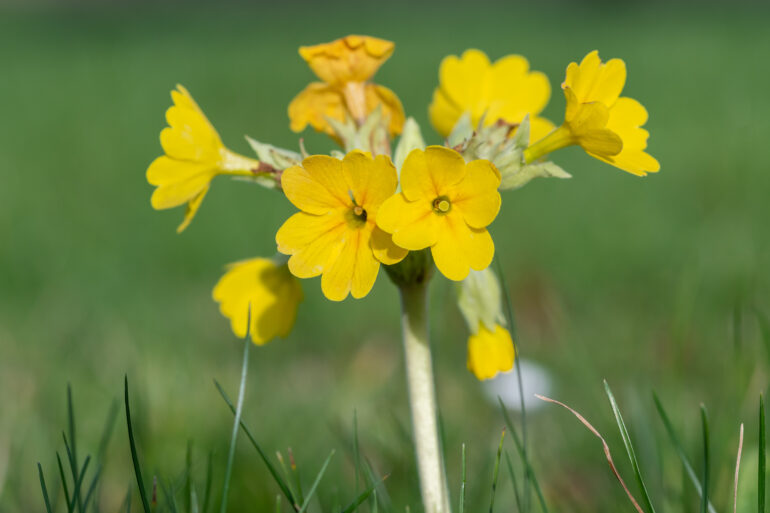
Cowslip (Photo: Tom Meaker / EyeEm via Getty Images)
Found on woodland floors and in meadows, the most famous of yellow wildflowers UK wide is a favourite meal of the Duke of Burgundy butterfly.
Ramsons | Allium ursinum

Ramsons (Photo: AL Hedderly via Getty Images)
Also known as wild garlic, it is common in woodlands and hedgerows.
Oxeye Daisy | Leucanthemum vulgare

Oxeye Daisy (Photo: Justin Hopkins / EyeEm via Getty Images)
As UK wildflowers go, the daisy is one of the best-known as well as among the most important for pollinating insects. They are found on verges, meadows and wasteland.
Lily-of-the-Valley | Convallaria majalis

Lily of the Valley (Photo: Bill Koplitz via Getty Images)
A pretty little white flower found on woodland floors, it has a distinct smell.
Sweet Violet | Viola odorata
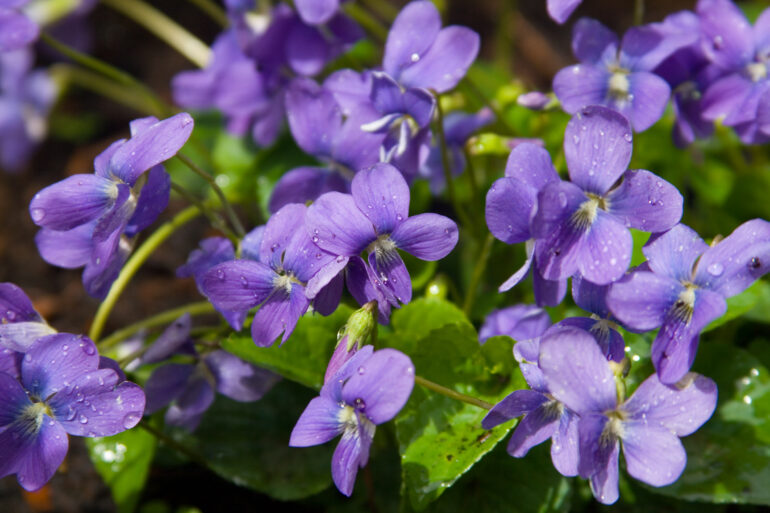
Sweet Violets (Photo: jfairone via Getty Images)
A favourite of butterflies, this strikingly-coloured bloom is sadly becoming one of the less common of the British wildflowers probably due to being over-picked.
This is just a short list of wildflowers in the UK. If you want to find out more about British wildflowers, you’ll be amazed at what you’ll see if you take a stroll and keep an eye out for the sheer variety on offer.












